What Is Acne? Complete Guide to Types, Causes, and Treatment Options
Introduction
The Medical Definition of Acne
Acne vulgaris is a medical condition that occurs when pores get clogged with excess sebum, cellular debris, and bacterial buildup. This blockage creates what we commonly refer to as pimples. Still, the acne definition encompasses several types of skin lesions that can appear on the face, chest, and back.
Breaking Down What Acne Means
Acne represents more than temporary blemishes – it’s a clinical skin disorder featuring:
- Comedones (blackheads and whiteheads) – the primary building blocks of acne formation
- Inflammatory lesions – red, swollen pimples that can be painful
- Deep nodular lesions – advanced forms featuring painful cysts beneath the skin surface
- Scarring potential – permanent skin changes in severe cases
Key Characteristics of Acne:
| Aspect | Description |
|---|---|
| Location | Primarily affects the face, neck, chest, back, and shoulders where oil glands are most prominent. |
| Age Range | Most common in teenagers due to hormonal changes, but it frequently affects adults as well. |
| Severity | Ranges from mild forms like blackheads (comedones) to severe, painful cystic lesions that can scar. |
| Duration | Can be a temporary condition that resolves after teen years, or a chronic issue lasting for decades. |
How Are Pimples Formed?
Understanding how pimples form helps you tackle breakouts more effectively. The process happens in four simple steps within your hair follicles.
How Are Pimples Formed?
Understanding how pimples form helps you tackle breakouts more effectively
Excess Oil Production
Pore Blockage
Bacterial Growth
Inflammation
What are the Types and Grades of Acne?
Not all acne is created equal, and understanding the different types of acne and acne grades helps you choose the right treatment and know when to see a dermatologist.
What are the Grades of Acne?
Dermatologists classify acne severity using a grading system from Grade 1 (mild) to Grade 4 (severe). Some systems extend to acne grades 1-5, with Grade 5 representing the most severe cases requiring immediate medical intervention.
Grade 1 (Mild
Acne)
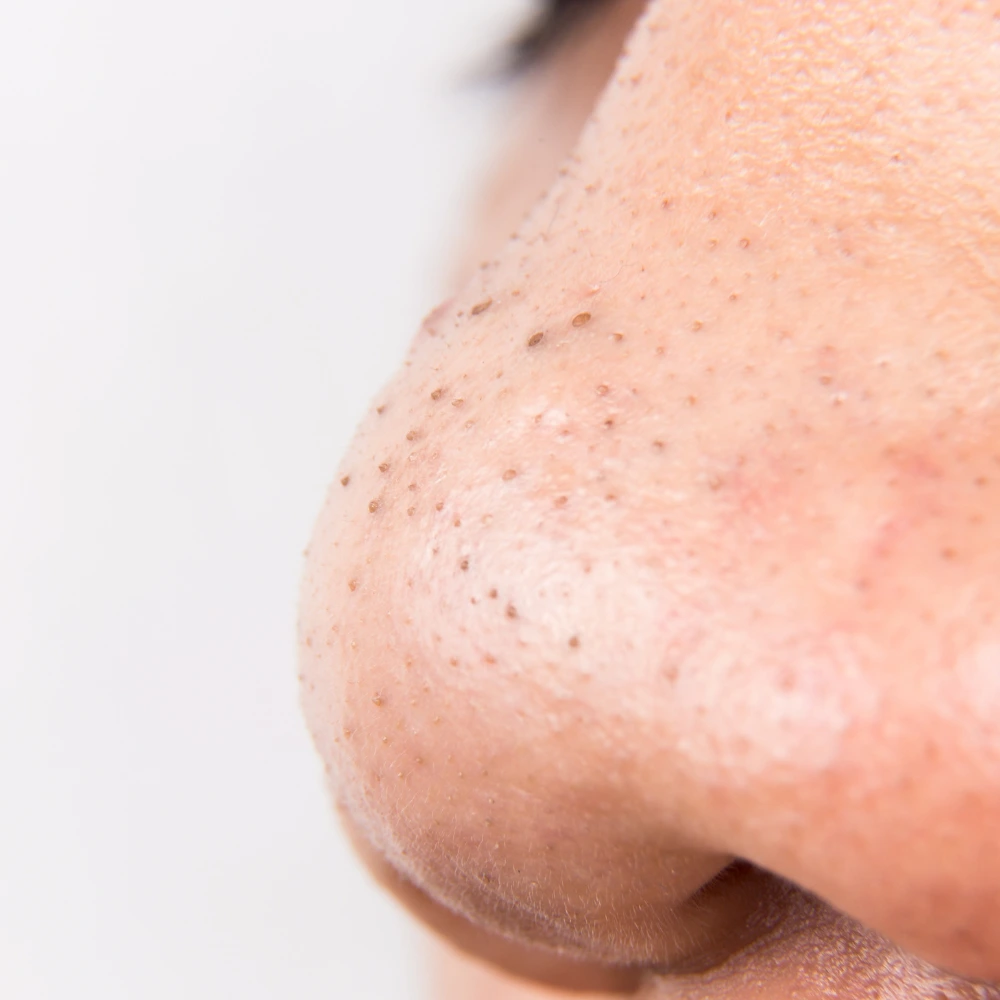
- Primarily blackheads and whiteheads
- Few inflammatory lesions
- Minimal scarring risk
Grade 2 (Moderate
Acne)
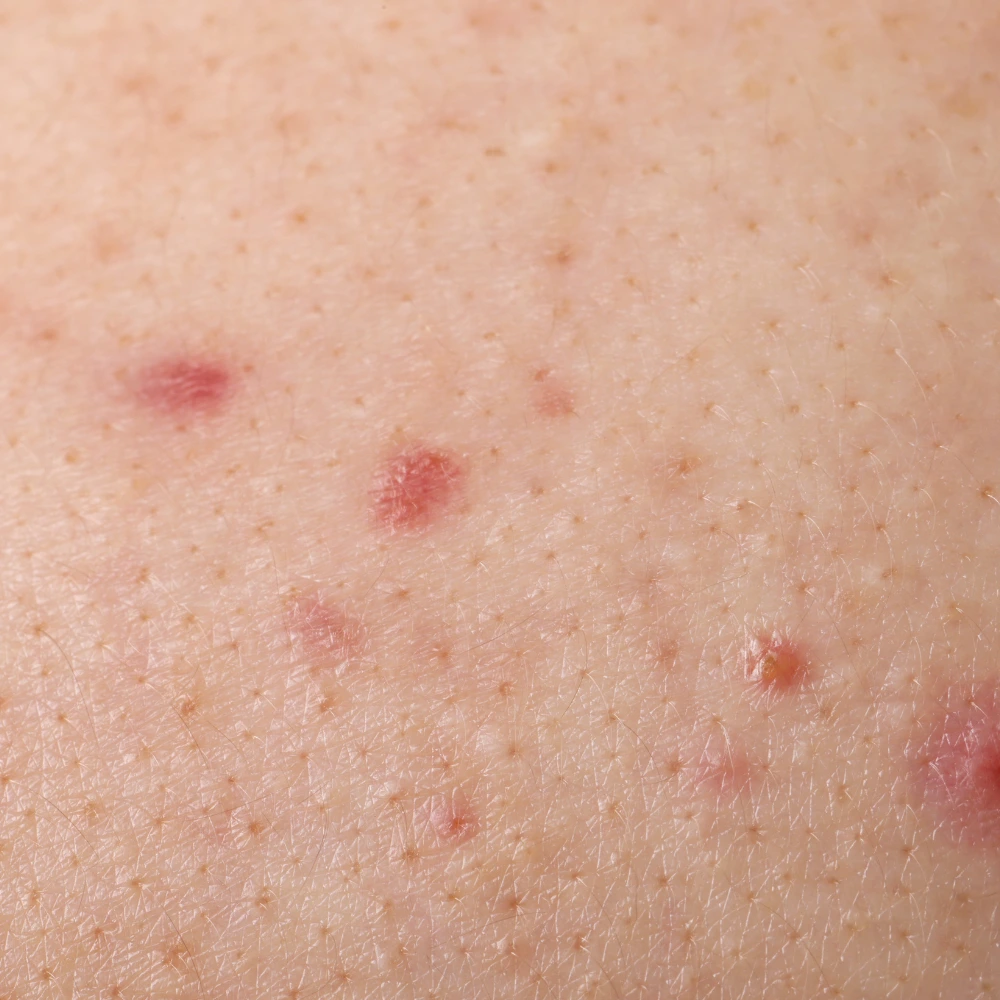
- More papules and pustules
- Visible inflammation
- May include some deeper lesions
Grade 3 (Moderately Severe)
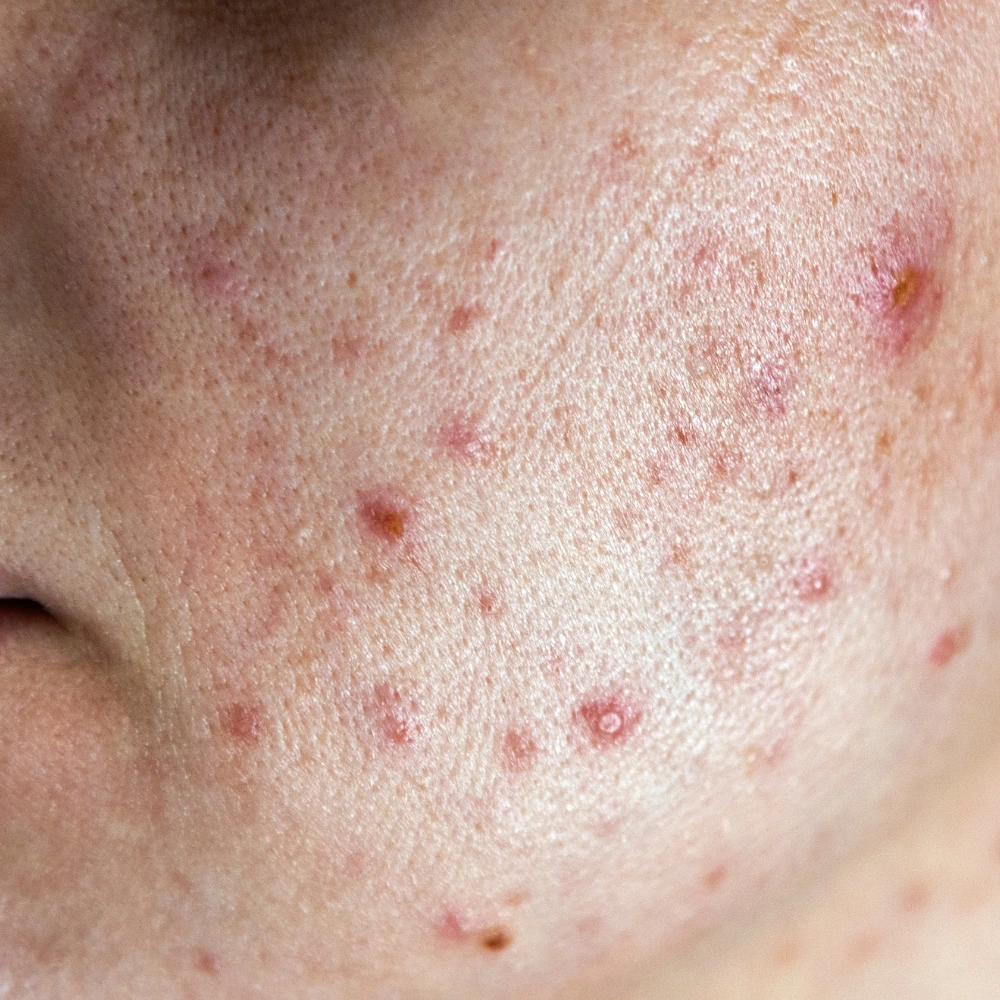
- Numerous inflamed lesions
- Some nodules present
- Higher risk of scarring
Grade 4 (Severe
Acne)
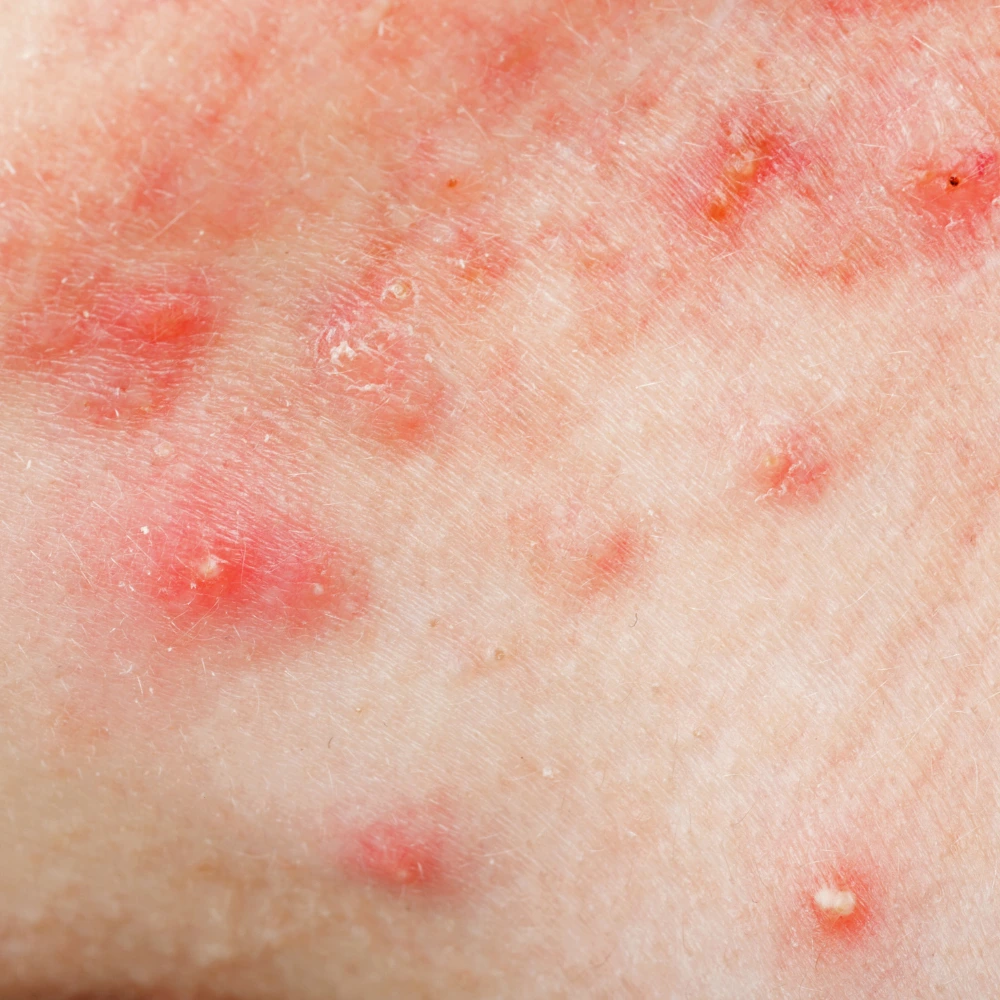
- Extensive inflammatory lesions
- Multiple nodules and cysts
- Significant scarring potential
Types of Acne
Knowing the various types of pimples allows you to recognize your specific skin concerns and select the most effective treatment approach.
Key Difference
Non-inflammatory acne involves clogged pores without redness or swelling. Inflammatory acne occurs when these clogged pores become infected, causing redness, swelling, and often pain.
Non-Inflammatory Acne
Clogged pores without significant swelling.
Characteristics
- ✓ No redness or swelling
- ✓ Generally painless
- ✓ Small bumps or dark spots
- ✓ Lower risk of scarring
- ✓ Responds to topical treatments
- ✓ Faster healing time
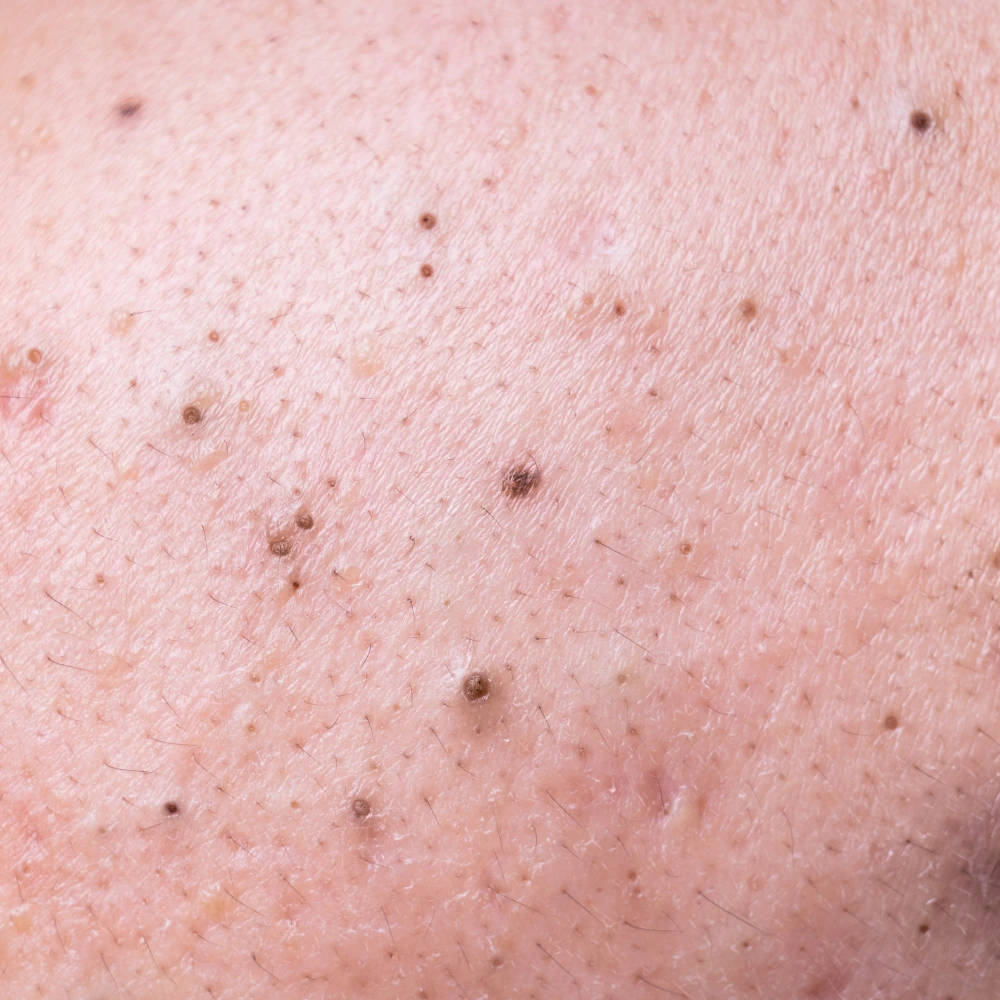
Blackheads
Open clogged pores where oil oxidizes and turns dark. Not caused by dirt but by oil and dead skin cells.
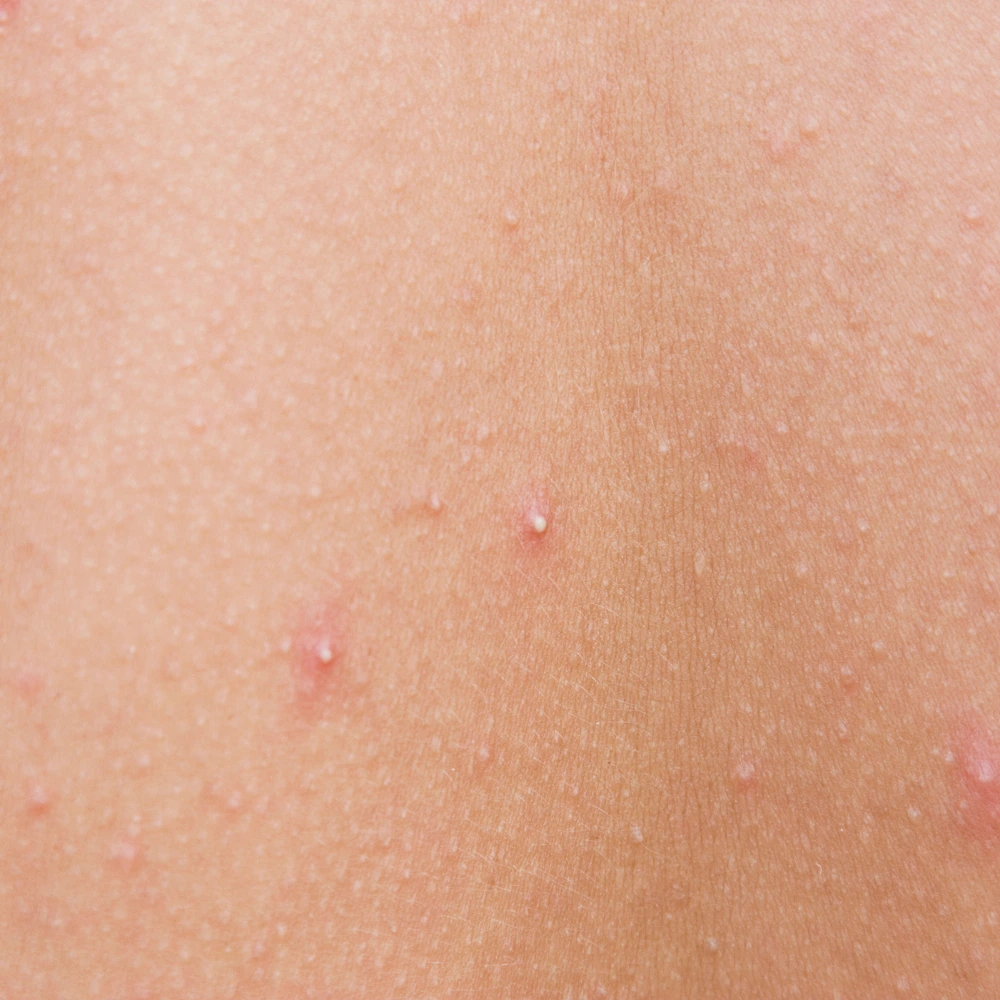
Whiteheads
Closed clogged pores covered by a thin layer of skin, trapping oil and dead skin cells beneath.
Inflammatory Acne
Infected pores causing immune response.
Characteristics
- ✓ Redness and swelling
- ✓ Often painful
- ✓ May contain pus
- ✓ Higher scarring risk
- ✓ May need medical treatment
- ✓ Longer healing time

Papules
Small red bumps without pus, caused by inflamed or infected hair follicles.
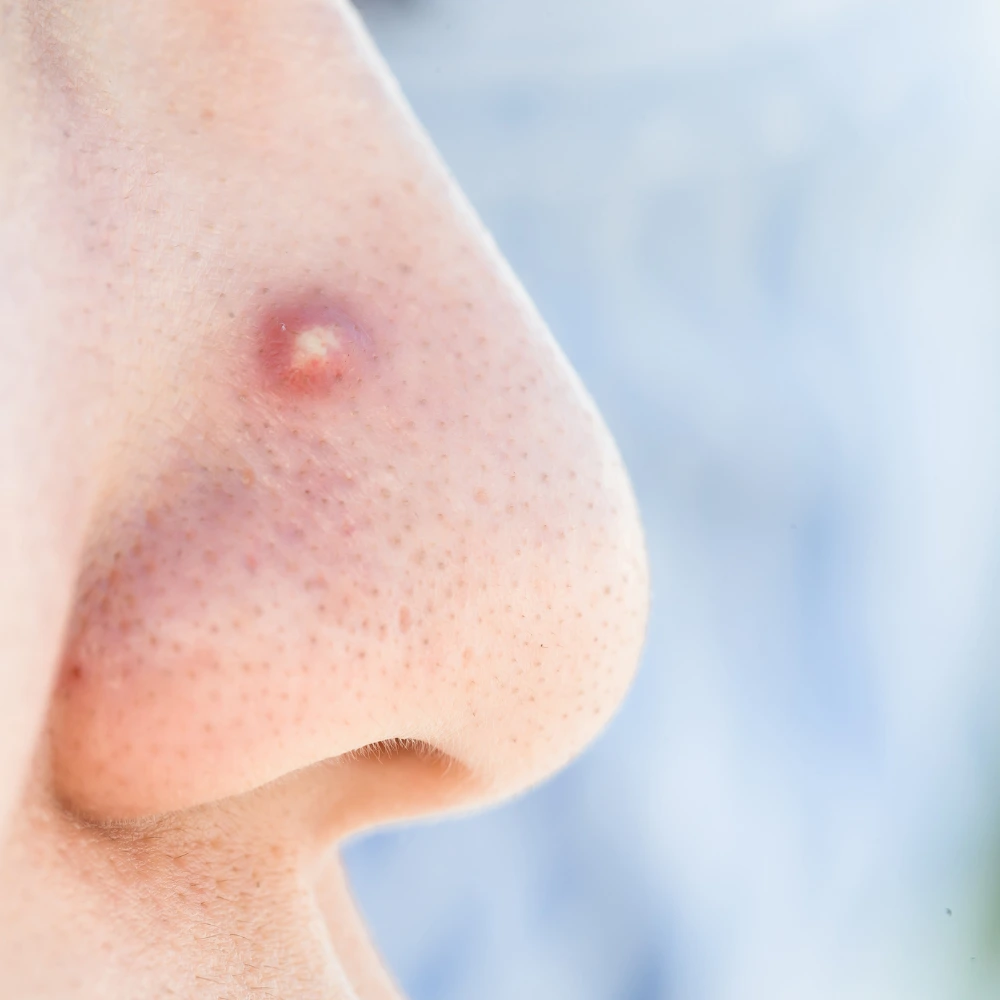
Pustules
Red bumps with white or yellow pus centers, formed when pores break down from inflammation.
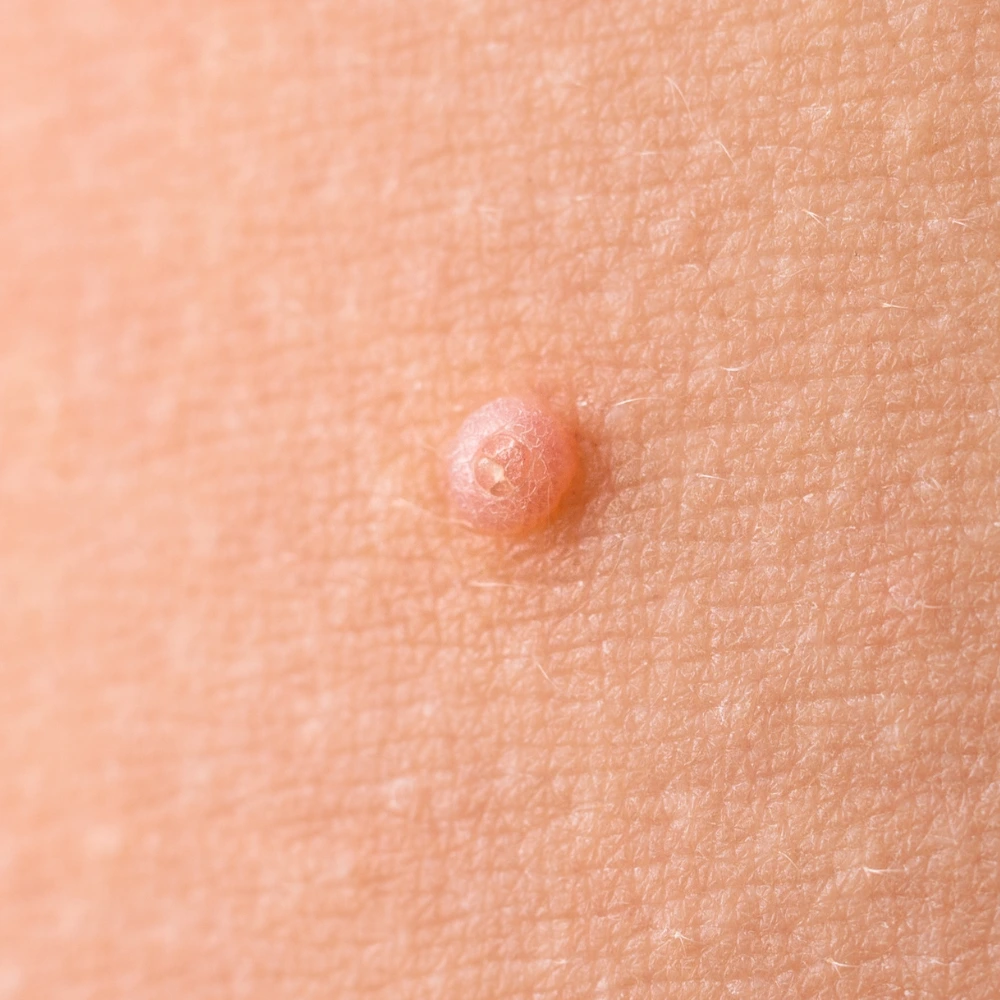
Nodules
Large, deep, painful lumps beneath the skin without pus, hard to treat.
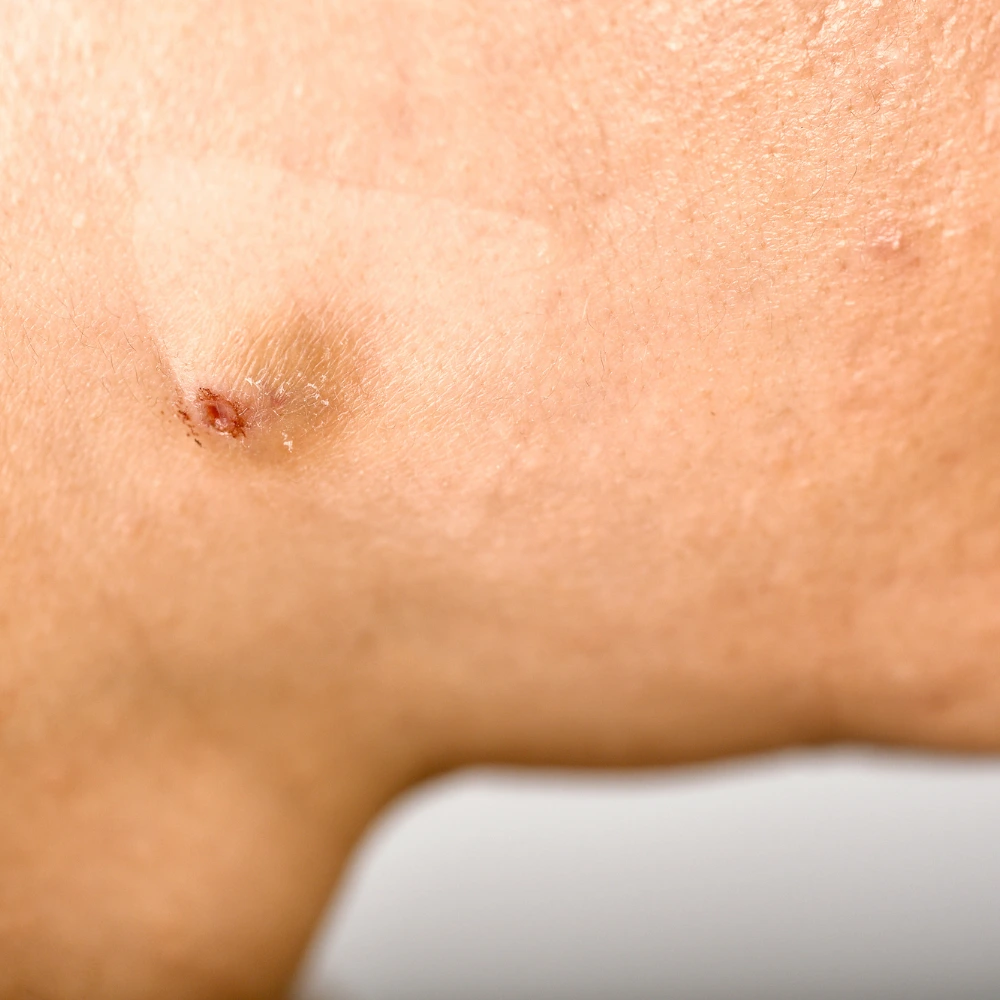
Cysts
Severe, pus-filled lesions deep in skin, very painful with high scarring risk.
What Percentage of the population has Acne?
Current epidemiological data indicate that nearly 1 in every 10 people worldwide experiences acne, representing close to 9.4% of the global population. This widespread occurrence places acne among the top ten most common health conditions globally. When examining specific age demographics, the numbers become even more striking, with overall prevalence climbing to 20.5%, particularly concentrated among teenagers and young adults (16-24 years), where rates reach 28.3%.
Regional Acne Prevalence
Source: Fabre Global Study
| Region | Prevalence Rate | Key Demographics |
|---|---|---|
| Latin America | 23.9% | Leading worldwide in acne occurrence |
| East Asia | 20.2% | Concentrated heavily in teenage populations |
| Africa | 18.5% | Notable post-inflammatory scarring rates |
| Middle East | 16.1% | Increasing trends in adult-onset cases |
| Australia | 10.8% | Below the worldwide average |
| Europe | 9.7% | Demonstrating the lowest regional rates globally |
Who is the Most Affected by Acne?
Age Distribution
- Adolescents (10-19 years): Highest prevalence rates
- Young Adults (20-24 years): 28.3% prevalence globally
- Adults (25-39 years): Nearly 1 in 5 adults in this age group experience acne (19.3% prevalence), dispelling the myth that acne only affects teenagers
Gender and Ethnicity Variations
Research focusing on female populations shows distinct patterns across ethnic groups, with African American women experiencing acne at rates of 37% and Hispanic women at 32%. Continental Indian women fall in the middle range at 30%, while both Caucasian and Asian women report lower incidence rates of 24% and 23% respectively. Source: Journal of the European Academy of Dermatology and Venereology
Discover Your Acne Triggers with Personalized Health Assessment
What Causes Acne?
Understanding the root causes of acne enables you to select the most effective treatments and prevent future breakouts. Acne develops when four key factors combine: excessive oil production, clogged pores, bacterial growth (specifically, Propionibacterium acnes), and inflammation.
Primary Biological Causes:
- Hormonal fluctuations – Multiple hormones affect acne development:
- Androgens (testosterone, DHT) – Increase sebum production and pore size
- Insulin and IGF-1 – Boost male hormones and accelerate keratinocyte (skin cell) proliferation
- Cortisol – A stress hormone that worsens inflammation and triggers oil production
- Progesterone – This may trigger breakouts in the second half of menstrual cycles.
- Estrogen dominance – When estrogen levels are high relative to progesterone, it can initially improve acne, but sudden drops (like before menstruation) trigger breakouts. Decreased estrogen levels weaken the skin’s natural anti-inflammatory protection.
- Genetics – Family history significantly influences acne likelihood and severity.
- Excess sebum production – Overactive oil glands create an ideal environment for bacterial growth
- Bacterial overgrowth – Propionibacterium acnes multiplies in clogged pores, causing inflammation
- Clogged hair follicles – When dead skin and sebum accumulate, they form blackheads and whiteheads
Diet and Lifestyle Factors:
- High glycemic foods – May increase insulin and IGF-1 levels, worsening acne
- Dairy products – Potentially linked to hormonal fluctuations
- Chronic stress – Elevates cortisol and androgen production
- Poor sleep pattern – Disrupts hormone regulation
- Inadequate skin care routine – Insufficient face washing lets dirt and oil accumulate
External Irritants:
- Comedogenic products – Pore-clogging ingredients in makeup and skincare
- Over-cleansing – Removes natural oils, causing the skin to produce more sebum
- Environmental pollutants – Dirt, humidity, and toxins clog pores
- Mechanical friction – Phone contact, pillowcases, tight clothing, frequent face touching
- Hair products – Pomades and oils transfer from hair to face, blocking pores
- Harsh scrubbing – Physical irritation worsens inflammation
Medical Conditions That Cause Acne:
- Polycystic Ovary Syndrome (PCOS) – Higher male hormone levels stimulate excessive sebum production
- Insulin resistance – High insulin and IGF-1 levels boost sebum production
- Thyroid disorders – Hormone imbalances affect skin oil regulation
- Adrenal gland conditions – Excess cortisol production triggers breakouts
- Certain medications – Steroids, mood stabilizers, and hormonal contraceptives can trigger pimples.
What are Acne Symptoms?
Non-Inflammatory Symptoms Mild
- Blackheads (open comedones) Dark spots on skin surface • Rough, bumpy texture • Non-tender
- Whiteheads (closed comedones) Small flesh-colored/white bumps • Smooth surface • Non-tender
- Enlarged pores Visible openings on skin • Uneven texture • Non-tender
- Rough skin texture Bumpy, uneven feel • Sandpaper-like surface • Non-tender
Inflammatory Symptoms Moderate
- Papules Small red bumps • Inflamed, raised texture • Tender to touch
- Pustules Red bumps with pus centers • Warm, swollen feel • Tender and painful
- Nodules Large lumps under skin • Hard, solid texture • Very tender and painful
- Cysts Deep pus-filled lesions • Soft, fluctuant feel • Extremely tender and painful
Infected Pimple Symptoms Severe
- Increased redness spreading Red streaking beyond pimple • Hot, inflamed skin • Extremely tender
- Severe pain or throbbing Pulsating sensation • Constant aching • Unbearable tenderness
- Warmth around affected area Hot to touch • Feverish skin • Painful when touched
- Pus discharge with odor Thick, cloudy drainage • Foul smell • Tender surrounding area
- Red streaking from pimple Lines extending outward • Warm, raised streaks • Painful to touch
- Fever Body temperature elevation • Systemic infection • Overall malaise
Identify Your Acne Type with Personalized Health Evaluation
What are the Tests for Acne?
Acne is typically diagnosed through visual examination, but testing helps identify underlying causes and optimize treatment strategies.
When Testing Is Recommended
- Persistent acne despite 3-6 months of treatment
- Sudden adult-onset acne (especially in women >25)
- Severe cystic or nodular acne
- Signs of hormonal imbalance (irregular periods, excess hair growth)
- Family history of PCOS or metabolic disorders
- Treatment monitoring requirements
Blood Tests for Acne
Hormonal Panel by Gender
| Test | Men Normal Range | Women Normal Range | Acne-Associated Levels |
|---|---|---|---|
| Total Testosterone | 300-1000 ng/dL | 15-70 ng/dL | Men: >800 ng/dL Women: >50 ng/dL |
| Free Testosterone | 9-30 ng/dL | 0.3-3.2 ng/dL | Men: >25 ng/dL Women: >2.5 ng/dL |
| DHEA-S | 80-560 mcg/dL | 35-430 mcg/dL | >400 mcg/dL (both genders) |
| Androstenedione | 75-205 ng/dL | 85-275 ng/dL | >250 ng/dL (both genders) |
| LH/FSH Ratio | N/A | 1:1 to 2:1 | >3:1 (suggests PCOS) |
| Prolactin | 4-23 ng/mL | 4-29 ng/mL | >30 ng/mL (may increase androgens) |
Gender-Specific Tests
Women Only:
- Estrogen (E2): 30-400 pg/mL (cycle-dependent). Drops <50 pg/mL trigger acne flares
- Progesterone: 0.2-25 ng/mL. Low luteal phase (<5 ng/mL) worsens acne
- 17-Hydroxyprogesterone: <200 ng/dL. Elevated (>200 ng/dL) suggests adrenal disorders
Men Only:
- DHT: 30-85 ng/dL. Levels >70 ng/dL strongly correlate with severe acne
- SHBG: 17-66 nmol/L. Low levels (<20 nmol/L) increase free testosterone availability
Additional Diagnostic Tests
Laboratory Tests
Inflammatory Markers:
- C-Reactive Protein: <3.0 mg/L (>3.0 indicates systemic inflammation)
- ESR: <30 mm/hr (elevated in severe inflammatory pimples)
Nutritional Assessment:
- Vitamin D: 30-100 ng/mL (deficiency <20 ng/mL impairs immune function)
- Zinc: 60-120 mcg/dL (deficiency <60 mcg/dL delays wound healing)
- Vitamin B12: 200-900 pg/mL (low levels may contribute to skin inflammation)
Thyroid Function:
- TSH: 0.4-4.0 mIU/L
- Free T4: 0.8-1.8 ng/dL
- Free T3: 2.3-4.2 pg/mL (Thyroid imbalances affect hormone regulation and skin health)
Specialized Tests
Microbiome Analysis:
- Skin microbiome testing to identify bacterial imbalances
- Gut microbiome analysis (emerging research links gut health to acne)
Food Sensitivity Testing:
- IgG food sensitivity panel (dairy, gluten, commonly implicated)
- Dietary modification protocols often provide clearer results than food sensitivity testing
Genetic Testing:
- CYP17A1 gene variants (affect androgen metabolism)
- FGFR2 gene mutations (influence sebaceous gland activity)
Skip the Guesswork – Get Targeted Acne Solutions
Foods that Cause Pimples vs. Clear Skin
Nourish Your Skin: The Link Between Diet and Acne
While genetics and hormones play a key role, your diet is a powerful tool in managing skin health. Understanding which foods may trigger breakouts and which can promote clarity is the first step towards a healthier complexion.
Foods to Limit
High-Glycemic Foods
These rapidly spike blood sugar and insulin levels, which can increase oil production and inflammation. Examples: White bread, sugary cereals, pastries, sodas, and processed snacks.
Certain Dairy Products
Some studies, particularly on skim milk, suggest a link to acne due to hormones like IGF-1 that can stimulate sebum glands. Examples: Skim milk, whey protein supplements.
High Omega-6 Fats
A diet high in omega-6 fatty acids (and low in omega-3s) can promote a pro-inflammatory state in the body, potentially worsening acne. Examples: Corn and soybean oils, many processed and fast foods.
Foods to Favor
Anti-Inflammatory Omega-3s
These healthy fats help regulate oil production and reduce overall inflammation, calming irritated skin. Examples: Fatty fish (salmon, mackerel), walnuts, flaxseeds, and chia seeds.
Antioxidant-Rich Produce
Fruits and vegetables fight oxidative stress and provide essential skin-healing vitamins like A and C. Examples: Berries, leafy greens (spinach, kale), sweet potatoes, and bell peppers.
Gut-Healthy Probiotics
A healthy gut microbiome can reduce systemic inflammation that may manifest as acne. Examples: Yogurt with live cultures, kefir, kimchi, and other fermented foods.
Zinc-Rich Foods
Zinc is crucial for skin healing and has anti-inflammatory properties that can help manage acne. Examples: Pumpkin seeds, lentils, chickpeas, and nuts.
What are Natural Supplements and Cures for Acne?
When you’re wondering how I get clear skin naturally, the answer lies in combining internal supplements with proven topical treatments. The best natural acne treatment addresses acne from both inside and outside your body for lasting results.
Internal Treatment: Supplements and Herbs for Clear Skin
Vitamin deficiency can cause acne, particularly vitamin D deficiency, which directly impacts acne severity. These natural supplements and herbs work from within to give you clear skin:
| Supplement/Herb | Daily Dosage | How It Works | Results Timeline | Best Taken With |
|---|---|---|---|---|
| Zinc | 30-40mg | Helps regulate sebum (oil) production and exhibits anti-inflammatory and antibacterial properties against C. acnes. | 12 weeks for full results | Food to prevent nausea |
| Omega-3 Fatty Acids | 1-2g | Lowers levels of inflammatory markers in the body, which can help calm red, swollen acne lesions. | 4-6 weeks for improvement | Meals for better absorption |
| Probiotics | As directed | May support a healthy gut microbiome, which helps reduce systemic inflammation that can trigger acne flare-ups. | 6-8 weeks for changes | Empty stomach (morning) |
| Vitamin D3 | 1000-2000 IU | Modulates the immune system’s response in the skin and strengthens the skin’s natural barrier against infection. | 8-12 weeks for benefits | Fat-containing meal |
| Spearmint Tea | 2 cups daily | May have anti-androgenic effects, helping to reduce circulating male hormones that can overstimulate oil glands. | 8-12 weeks for hormonal balance | Between meals |
| Saw Palmetto | 160mg twice daily | May work by blocking 5-alpha-reductase, an enzyme that converts testosterone to the more potent DHT, a key acne trigger. | 12-16 weeks for results | With food |
| Turmeric | 500mg daily | Contains curcumin, a powerful compound that may help reduce the body’s inflammatory pathways. | 2-4 weeks for inflammation | With black pepper for absorption |
| Evening Primrose | 1000mg | Delivers gamma-linolenic acid (GLA), a unique omega-6 fat that may aid in regulating hormonal fluctuations and soothing inflammation. | 8-12 weeks for hormonal balance | With meals |
Topical Natural Treatments for Acne
These proven external treatments work directly on your skin to treat acne pustules naturally and treat mild acne naturally:
| Natural Treatment | Concentration/Form | How to Use | Primary Benefit | Best For | Results Timeline |
|---|---|---|---|---|---|
| Tea Tree Oil | 5% dilution in carrier oil | Apply to affected areas twice daily | Antimicrobial, similar to benzoyl peroxide | Pustules, inflammatory acne | 2-4 weeks |
| Aloe Vera Gel | Fresh or 100% pure gel | Apply a thin layer to clean skin twice daily | Soothes inflammation, aids healing | Mild acne, irritated skin | 1-3 weeks |
| Green Tea Extract | Cooled tea or 2-3% cream | Use as a toner or in skincare daily | Reduces sebum production | Oily skin, prevention | 4-6 weeks |
| Willow Bark Extract | 1-2% concentration | Apply as a serum/treatment once daily | Natural salicylic acid, gentle exfoliation | Blackheads, clogged pores | 3-6 weeks |
| Niacinamide | 5-10% serum | Apply to clean skin morning and evening | Controls oil, reduces inflammation | All acne types, enlarged pores | 6-12 weeks |
| Vitamin C Serum | 10-20% concentration | Apply to clean skin once daily (morning) | Fades dark spots, antioxidant protection | Post-acne marks (PIH) | 4-8 weeks |
| Rosehip Seed Oil | Pure, cold-pressed oil | Massage 2-3 drops into skin nightly | Promotes skin renewal, hydrates | Fading scars, not for active breakouts | 8-16 weeks |
| Warm Compress | Warm, damp cloth | Press on cysts for 10-15 mins, 2-3 times daily | Pain relief, reduces inflammation | Cystic acne, deep breakouts | Immediate relief |
Get Your Personalized Acne-Fighting Supplement Plan
What is the Best Acne Treatment?
Best Topical Medicine for Zits
When over-the-counter products fail to deliver results, dermatologists prescribe powerful topical acne medications that target stubborn breakouts more effectively, so understanding these acne medicine options helps you make informed decisions about your skin health.
1. Topical Antibiotics
Primary Options:
- Clindamycin – Dermatologists widely prescribe this as a primary treatment option for patients with mild to moderate inflammatory acne breakouts. Source: Healthline
- Erythromycin – An alternative topical antibiotic that dermatologists frequently prescribe in combination with zinc or benzoyl peroxide to enhance its acne-fighting effectiveness.
- Minocycline foam – Newer formulation for inflammatory lesions
Combination Products:
- Clindamycin + Benzoyl Peroxide (BenzaClin, Duac) – Prevents antibiotic resistance while targeting bacteria.
- Erythromycin + Benzoyl Peroxide (Benzamycin) – This combination medication targets moderate acne through simultaneous antibacterial and keratolytic action.
Timeline: Most patients begin noticing visible skin improvements between the fourth and sixth week of consistent topical clindamycin application. Clinical research indicates patients typically experience a 55% reduction in pimple lesions following three months of consistent treatment.
2. Retinoids (Vitamin A Derivatives)
- Tretinoin (Retin-A) – The most established and proven retinoid for treating both blackheads/whiteheads and inflammatory acne lesions. Source: Healthline
- Adapalene (Differin) – Gentler option, good for sensitive skin
- Tazarotene (Tazorac) – The most potent retinoid available, often providing the strongest results when used in combination therapy for severe acne. Source: NIH
3. Anti-inflammatory Options:
- Azelaic Acid (Azelex, Finacea) – Reduces inflammation and lightens acne marks
- Dapsone Gel (Aczone) – Particularly effective for hormonal acne in women
- Sodium Sulfacetamide + Sulfur – A highly effective combination for treating cystic acne, with the sulfacetamide providing antibacterial action and sulfur offering anti-inflammatory benefits
Non-Topical Acne Medications
While topical treatments form the foundation of most acne treatment regimens, they may not be sufficient on their own. When you’re dealing with moderate to severe acne, inflamed acne, or stubborn acne that doesn’t respond to surface treatments, your dermatologist might recommend systemic (internal) medications. These powerful treatments work from within your body to target the root causes of acne formation.
1. Oral Antibiotics for Acne Treatment
| Antibiotic | Typical Dosage | Best For | Key Benefits | Potential Side Effects |
|---|---|---|---|---|
| Doxycycline | 40-100mg daily | Inflammatory acne, cystic acne | Strong anti-inflammatory effects; convenient once-daily dosing; lower dose options reduce side effects. | Sun sensitivity, nausea, esophageal irritation, yeast infections. |
| Minocycline | 50-100mg twice daily | Moderate to severe acne | Superior penetration into oil glands; effective against resistant bacteria; good bioavailability with food. | Dizziness, vertigo, blue-gray skin discoloration (rare), autoimmune reactions. |
| Tetracycline | 250-500mg twice daily | Inflammatory acne | Decades of proven safety data; most cost-effective option; broad-spectrum activity. | Severe sun sensitivity, GI upset, tooth discoloration, yeast infections. |
| Erythromycin | 250-500mg twice daily | Pregnant patients, tetracycline-allergic | Only oral antibiotic considered safe during pregnancy; effective alternative for those with tetracycline allergies. | Nausea, vomiting, diarrhea, abdominal cramping, antibiotic-associated colitis. |
| Azithromycin | 500mg 3x/week | Maintenance therapy | Requires only 3 doses per week; long tissue half-life provides sustained effects; reduces risk of antibiotic resistance. | GI upset, diarrhea, potential cardiac arrhythmias (rare). |
Important Considerations for Oral Antibiotics
- Effectiveness Timeline: Most patients notice improvement within 6-8 weeks, with maximum benefits typically seen after 3-4 months of consistent use.
- Treatment Duration: Most oral antibiotics are prescribed for 3-6 months, with a specific duration depending on acne severity and individual response.
2. Hormonal Therapy for Acne
| Treatment | Mechanism | Typical Candidates | Duration | Effectiveness |
|---|---|---|---|---|
| Combined Oral Contraceptives | Reduces androgen activity, stabilizes hormones | Women with hormonal acne, irregular periods | Long-term | 60-70% improvement |
| Spironolactone | Blocks androgen receptors, reduces oil production | Adult women with persistent acne | 6-12 months minimum | 70-80% improvement |
| Cyproterone Acetate | Anti-androgen with progestogenic effects | Severe hormonal acne (not in US) | 6-12 months | 80-90% improvement |
| Flutamide | Pure anti-androgen | Severe cases, when other treatments fail | 6-12 months | Variable results |
| Finasteride | 5-alpha reductase inhibitor, reduces DHT | Men with hormonal acne, women (off-label) | 6-12 months | 60-75% improvement |
| Dutasteride | Dual 5-alpha reductase inhibitor (potent) | Severe, resistant hormonal acne | 6-12 months | 70-85% improvement |
Contraindications:
- Pregnancy or planning pregnancy
- History of blood clots (for birth control pills)
- Kidney disease (for spironolactone)
- Liver disease
3. Isotretinoin: The Most Effective Acne Treatment
When you’re dealing with severe acne, cystic acne, or acne that hasn’t responded to other treatments, a low dose of isotretinoin (formerly known as Accutane) is often considered the gold standard. This powerful oral retinoid is the closest thing we have to a “cure” for zits, with the potential to provide long-lasting or even permanent results.
Key Facts
- Mechanism: Dramatically reduces oil production (by up to 90%), normalizes skin cell turnover, calms inflammation, and lowers acne-causing bacteria.
- Duration & Dosing: A course typically lasts 4-6 months. While traditional doses are weight-based (0.5-1.0 mg/kg/day), modern low-dose regimens (approx. 0.3-0.4 mg/kg/day) are increasingly used to minimize side effects while remaining effective.
- Success Rate: Around 85% of patients achieve long-term remission after a single course.
Ideal Candidates
- Severe nodulocystic acne
- Persistent moderate acne unresponsive to conventional therapies
- Pimples causing significant scarring
- Breakouts that dramatically affect daily life and self-confidence
Common Side Effects
- Dry Skin & Lips: This is an almost universal side effect.
- Dry Eyes: May cause dryness and potential vision changes.
- Aches: Joint and muscle aches can occur.
- Initial Flare-up: Pimples may temporarily worsen in the first month.
Serious Considerations
- Blood Monitoring: Regular blood work is required to monitor liver function, cholesterol, and triglycerides.
- Mood Changes: Though rare, serious mood changes are a potential side effect that requires immediate medical attention.
- Birth Defects: Isotretinoin is highly teratogenic and causes severe birth defects. Female patients must use reliable birth control and undergo monthly pregnancy tests.
Long-term Results: 60-70% of patients achieve lasting clearance after one treatment course, while 20-30% require a second course for complete remission and significant improvement in preventing future pimple scarring.
Surgical and Laser Treatments for Acne
When topical treatments fail to clear persistent acne, dermatologists offer two advanced professional solutions: surgical procedures and laser therapies. These options effectively treat both active breakouts and acne scarring.
Surgical Options for Acne Treatment
1. Manual Extraction Procedures
Professional extractions involve the careful removal of:
- Blackheads (open comedones)
- Whiteheads (closed comedones)
- Milia (small white bumps)
- Pustules
2. Excision and Drainage
Blemish excision involves making a tiny cut in the skin to remove infected material and fluid from deep cystic lesions. This procedure is particularly effective for:
- Large, painful cysts
- Deep-rooted blemishes
- Infected acne lesions
3. Corticosteroid Injections
Corticosteroid injections quickly calm down big, painful pimples by injecting medicine straight into the swollen area, with results usually visible within a day or two.
4. Acne Scar Surgery
For established acne scars, surgical options include:
- Punch excision utilizes tiny, round blades to extract deep, slender scars, followed by stitching to promote a more even skin texture.
- Subcision makes use of a needle inserted under the skin to sever the tough, fibrous strands that anchor depressed scars, enabling the sunken areas to lift and smooth out.
- Dermabrasion removes damaged skin using a rotating device that smooths away scars, allowing healthy skin to replace the treated area.
Laser Treatment for Acne: Advanced Solutions
Laser treatments work through three primary mechanisms – photo thermolysis (controlled heating of target tissues), bacterial destruction (specific wavelengths kill P. acnes bacteria by exciting their porphyrins), and sebaceous gland modulation (thermal energy reduces oil production by heating and temporarily damaging overactive oil glands), while also stimulating collagen production for long-term skin improvement.
Types of Laser Treatments
1. Blue Light Therapy
- Targets acne-causing bacteria (P. acnes)
- Blue light therapy offers an excellent safety profile with rarely reported adverse effects, making it suitable for regular treatments.
- Ideal for inflammatory acne
2. Pulsed Dye Laser
- Reduces redness and inflammation
- Works especially well for inflamed pimples and the red marks left behind after breakouts heal.
- Minimal downtime is required.
3. Fractional Laser Resurfacing
- Treats acne scars by promoting collagen production
- While it doesn’t remove active acne, it significantly improves acne scarring.
- Requires multiple sessions for optimal results
4. CO2 Laser Treatment
- CO2 laser is typically the most expensive option, but it offers dramatic results for severe scarring
- Longer recovery time but excellent outcomes
How do you use Advanced Acne Therapy?
Modern laser systems combine multiple wavelengths and technologies:
- IPL (Intense Pulsed Light) for reducing bacteria and inflammation
- Radiofrequency for deep tissue heating
- Combination therapies for comprehensive treatment
When to Seek Medical Help for Acne
Many people struggle with persistent acne and wonder when professional help becomes necessary. It depends on several factors, including severity, scarring potential, and impact on quality of life. You should consider seeing a dermatologist when:
- Over-the-counter treatments haven’t worked after 6-8 weeks
- Acne that causes emotional distress or affects confidence
- Deep, painful cysts or nodules are present
- Scarring is beginning to develop
- Acne that appears on broader regions such as the back, face, and chest.
What Do Dermatologists Do for Acne?
Dermatologists treat acne through comprehensive approaches that go beyond what is available over the counter. Treatment options include:
1. Topical Prescriptions:
- Retinoids (tretinoin, adapalene, tazarotene)
- Topical antibiotics (clindamycin, erythromycin)
- Benzoyl peroxide combinations
- Azelaic acid
- Most dermatologists suggest gentle, non-comedogenic cleansers containing salicylic acid or benzoyl peroxide.
2. Oral Medications:
- Antibiotics (doxycycline, minocycline)
- Hormonal treatments (spironolactone for women)
- Isotretinoin for severe cases
3. Professional Procedures:
- Chemical peels
- Extraction procedures
- Laser treatments
- Corticosteroid injections
Patients generally notice enhancements within 6 to 12 weeks after beginning treatment, with the best outcomes usually observed after 3 to 6 months. However, maintenance therapy is often necessary to prevent recurrence.
How much does Acne Treatment Cost?
Treatment expenses vary significantly by location and severity. Here’s a breakdown of approximate costs for moderate to severe acne treatment:
| Location | Initial Consultation | Monthly Treatment | Severe Acne (6-month course) |
|---|---|---|---|
| United States | $150-$300 | $200-$500 | $1,500-$3,000 |
| United Kingdom | £240-£300 | £150-£400 | £1,200-£2,500 |
| Australia | AUD $200-$350 | AUD $250-$600 | AUD $2,000-$4,000 |
| Canada | CAD $180-$300 | CAD $200-$450 | CAD $1,800-$3,500 |
| India | ₹2,500-₹5,000 | ₹3,000-₹8,000 | ₹25,000-₹50,000 |
Note: Costs include consultation fees, medications, and follow-up visits. Insurance coverage varies by location and policy.
Take Control of Your Acne Journey Today
FAQs: Your Common Questions Answered Here
Most people experience acne during their teenage years, though it can continue well into their 20s to 30s. Adult acne can continue beyond age 30, especially in women, due to hormonal fluctuations. Treatment duration depends on severity; mild acne may improve in 6-8 weeks, while moderate to severe cases can take 3-6 months with consistent treatment.
This form of acne typically emerges on the lower facial areas, especially along the jawline, chin, and lower cheeks. It tends to worsen during certain times of the menstrual cycle.
Apply a cold compress to reduce inflammation, then use a spot treatment with benzoyl peroxide or salicylic acid. For severe cysts, see a dermatologist for cortisone injections, which can reduce them within 24-48 hours.
Use salicylic acid products to dissolve the buildup inside pores, or try gentle extraction tools after steaming your face. Professional facials and chemical peels are also effective for stubborn blackheads.
Cold therapy can provide temporary relief by reducing inflammation and swelling in active breakouts. Apply ice wrapped in a clean cloth for 5-10 minutes to prevent frostbite or skin damage.
Clean your face twice a day using a mild, gentle cleanser; once when you wake up and once before going to bed. Frequent washing may aggravate the skin and exacerbate acne by removing vital natural oils.
Yes, face washes containing harsh ingredients, fragrances, or comedogenic substances can clog pores and trigger breakouts. Choose non-comedogenic, gentle cleansers specifically formulated for acne-prone skin.
Avoid heavy oils such as coconut oil, alcohol-based products, artificial fragrances, and harsh scrubs. These ingredients can clog pores, cause irritation, or disrupt your skin’s natural barrier.
Using multiple acne treatments at once can lead to irritation, dryness, and increased breakouts. Begin with just one product and give your skin several weeks to adjust before adding any new treatments to your routine.
Professional treatments offer stronger concentrations of active ingredients and specialized procedures such as chemical peels or extractions. At-home treatments are gentler and more affordable but may take longer to show results for severe acne. Look for products containing salicylic acid, benzoyl peroxide, or retinoids as active ingredients. Choose non-comedogenic formulas from reputable brands like CeraVe, Neutrogena, or La Roche-Posay for consistent results.
Isotretinoin (Accutane) is considered the most potent acne medication, reserved for severe cases that do not respond to other treatments. It is highly effective but requires careful monitoring due to potential side effects and should be prescribed by a dermatologist.
Treatment timelines vary by method – benzoyl peroxide typically shows initial results within 2-4 weeks, with full improvement taking 6-12 weeks. Dermatologist-prescribed treatments usually show improvement within 6-12 weeks, but complete clearance can take 3-6 months. Severe acne takes 6 to 12 months to improve.
Laser treatments are generally safe when performed by qualified professionals, though some redness and swelling may occur. Most patients experience minimal discomfort during treatment, describing the sensation as similar to a rubber band snapping.
Use products containing vitamin C, niacinamide, or hydroquinone to lighten post-inflammatory hyperpigmentation. Consistent sunscreen use is crucial to prevent further darkening, and chemical peels can accelerate the fading process.
Expectant mothers need to steer clear of certain acne ingredients, including retinoids, salicylic acid, and benzoyl peroxide, due to potential risks. Pregnancy-safe alternatives include mild cleansing products, azelaic acid treatments, and certain topical antibiotics like erythromycin when prescribed by a healthcare provider.
While complete clearance in 7 days isn’t realistic, you can reduce inflammation with gentle cleansing, spot treatments, and avoiding popping pimples at breakouts. Focus on maintaining a consistent skincare routine rather than expecting overnight miracles.





